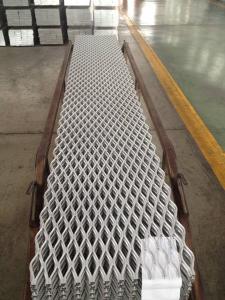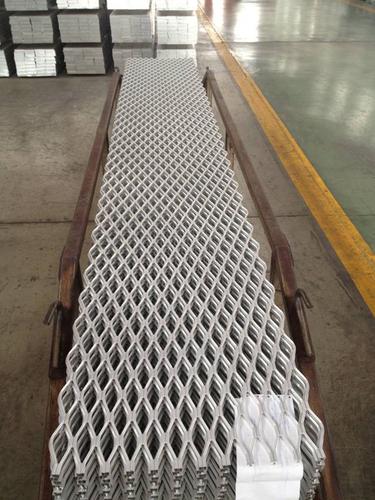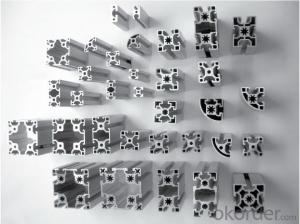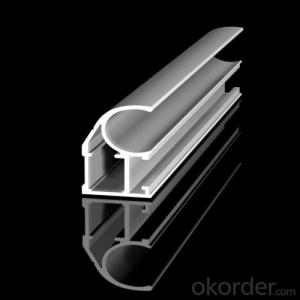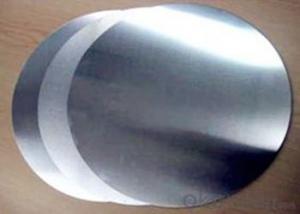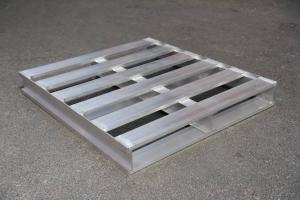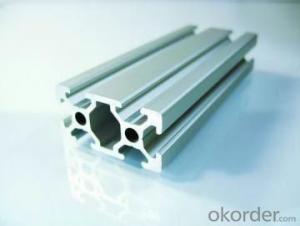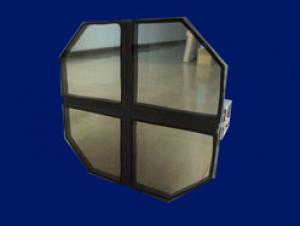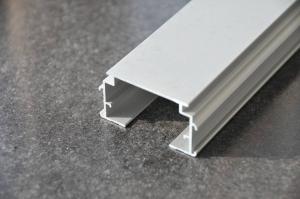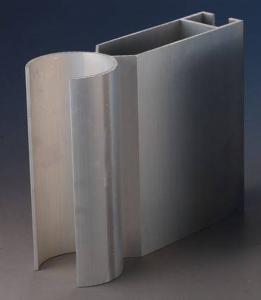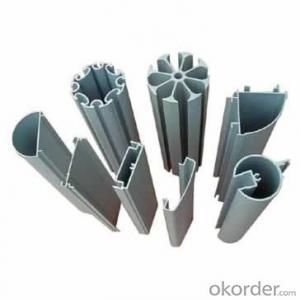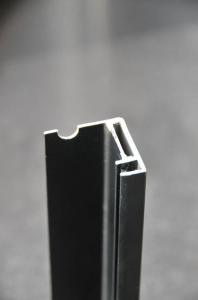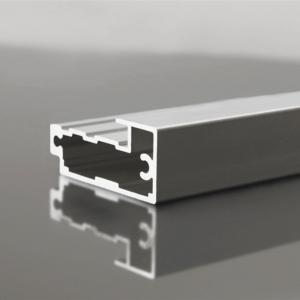Hot Sale Aluminum Walkway Extrusion Profiles C Channel
OKorder Service Pledge
OKorder Financial Service
You Might Also Like
Hot Sale Aluminium Walkway
Alloy: 6xxx
Applications: Safety grating, stair tread, walkway, cat-way, flooring
Standard package: suitable for long ocean transporting
OEM&ODM is welcome
Life Time:Last for life time
Diamond openings are complete with radiused corners at the saddle and side channel location
Specifications
1) Thickness:3.0mm
2) SWDxLWD:25x50mm
3) Competitive Price
Others:
Material: aluminum plate
Hole shape: diamond,hexagonal..
Pattern: Standard - raised surface aluminum expanded metal mesh, Flattended aluminum expanded metal mesh
Packing: moist-proof paper/pallet -wooden cases or wooden pallets or iron pallets
Surface treatment:powder coating,pvc coated, anodizing(oxidation)
Characteristic: The aluminum expanded metal mesh are made by the aluminum plate,widely used in the civil buildingand sound abatment material inthe hall,meeting rooms,walkway mesh.And the aluminum expanded metal meshs surface can be powder coating or PVC coated ,ex.:white,red, green etc.this is a good material for the decoration,it's very beautiful used for the housetop or walkway.
- Q: How do you install aluminum profiles?
- To install aluminum profiles, first, determine the appropriate location and measurements for the profiles. Then, using a saw or cutter, cut the profiles to the desired length. Next, attach the profiles to the designated area using screws or brackets. Ensure that the profiles are securely fastened. Finally, make any necessary adjustments or modifications to achieve the desired fit and appearance.
- Q: Are aluminum profiles suitable for food processing applications?
- Aluminum profiles prove to be a fitting option for food processing applications. Aluminum, being a lightweight and corrosion-resistant material, finds extensive use in the food processing industry due to its numerous advantages. To begin with, aluminum profiles possess easy-to-clean and maintain properties, which are crucial in food processing environments where hygiene holds utmost importance. They can be effortlessly washed and sterilized, preventing any potential cross-contamination or bacterial growth. Moreover, aluminum is non-toxic and does not react with food or beverages, ensuring that the processed products' integrity and quality remain uncompromised. This aspect gains particular significance when dealing with acidic or alkaline foods that may react with other materials. Additionally, aluminum profiles exhibit exceptional thermal conductivity, facilitating efficient heat transfer during processing operations like baking or cooling. This feature guarantees uniform heat distribution, resulting in consistent outcomes. Furthermore, aluminum stands as a sustainable material that can be recycled repeatedly without losing its properties. This aspect aligns with the growing emphasis on sustainability and environmental responsibility in the food processing industry. In conclusion, the attributes of aluminum profiles render them a suitable choice for food processing applications, offering durability, cleanliness, and compatibility with food products.
- Q: What are the potential safety issues that might arise from using aluminum profiles in construction projects?
- <p>While aluminum profiles are generally safe and widely used in construction due to their strength, lightweight, and corrosion resistance, there are a few safety concerns to consider. These include ensuring proper installation to prevent structural failure, avoiding sharp edges that could cause injury, and ensuring that the aluminum does not react with other materials in a way that could compromise safety. Additionally, it's important to use aluminum profiles that meet building codes and standards to ensure they can withstand the expected loads and environmental conditions.</p>
- Q: This question asks for an overview of the various types of aluminum profiles that are utilized in the construction of interior partitions and ceilings.
- <p>Aluminum profiles for interior partitions and ceilings come in various types, each serving specific purposes and functions. Common types include: 1. U-Channel profiles, used for creating the framework of ceilings and partitions. 2. T-profiles, often used as a cover for the joints between panels. 3. H-profiles, which are used as main beams in ceiling systems. 4. Angle profiles, used for corner connections and support. 5. Flat bar profiles, used for decorative or functional purposes in ceilings and partitions. 6. Box profiles, which can be used for both structural and aesthetic applications. 7. Special profiles, designed for specific applications such as lighting fixtures or air conditioning ducts. These profiles are chosen based on the design requirements, load-bearing needs, and aesthetic preferences for the project.</p>
- Q: Are aluminum profiles suitable for use as exterior walls in residential buildings?
- <p>Yes, aluminum profiles can be used for exterior walls in residential buildings. They offer several advantages such as durability, low maintenance, and resistance to corrosion. Aluminum profiles are lightweight, which makes them easier to install compared to heavier materials. They also have good thermal conductivity, which can be managed with proper insulation to maintain energy efficiency. Additionally, aluminum can be powder-coated in various colors, offering design flexibility. However, it's important to ensure that the aluminum profiles meet building codes and standards for structural integrity and weather resistance.</p>
- Q: How to distinguish aluminum alloy series?
- The general term for aluminum profiles is the ratio of length and width. For example, 4040 is so long, 40mm width is 40mm, and so on.. ,
- Q: This question asks for the standard specifications and measurements of aluminum profiles that are frequently utilized in construction projects.
- <p>Aluminum profiles used in construction come in various specifications and measurements. Commonly, they are categorized by series such as 6060, 6061, 6063, and 6082, each with different mechanical properties. Sizes can range from small profiles like 20x20mm to large ones like 200x200mm or more. Thicknesses typically vary from 1mm to 6mm, depending on the structural requirements. Lengths can be customized but are generally available in standard lengths such as 6 meters. The profiles are measured in terms of their width, height, and thickness, and they are designed to meet specific load-bearing and aesthetic needs in construction. It's important to consult with suppliers or construction specifications for the exact measurements required for a particular project.</p>
- Q: What are the potential health risks associated with handling aluminum profiles?
- <p>Working with aluminum profiles generally does not pose significant health concerns under normal conditions. However, there are a few considerations. Inhalation of aluminum dust can cause respiratory issues, and prolonged exposure may lead to a condition known as 'aluminum dust disease.' Additionally, aluminum can cause skin irritation in some individuals, especially with prolonged contact. It's important to use proper personal protective equipment (PPE), such as masks and gloves, to minimize these risks. Ingestion of aluminum is also a concern, as it can lead to health problems if it enters the body through contaminated food or water, although this is not directly related to handling aluminum profiles.</p>
- Q: Are aluminum profiles suitable for medical equipment and devices?
- Certainly, medical equipment and devices can indeed benefit from the use of aluminum profiles. Aluminum, being a versatile material, offers numerous advantages in the field of medical applications. Firstly, its lightweight nature renders it highly suitable for portable medical devices, thereby facilitating easy transportation, particularly in urgent situations. Moreover, the corrosion-resistant properties of aluminum are of utmost importance in maintaining the sterility and cleanliness of medical equipment. Furthermore, the material's durability allows it to withstand harsh environments and endure regular cleaning and sterilization procedures. Additionally, the adaptability of aluminum profiles enables effortless customization and fabrication into various shapes and sizes, thereby catering to diverse medical device designs. In conclusion, the exceptional characteristics of aluminum make it a dependable and appropriate choice for medical equipment and devices.
- Q: I have a product in the aluminum above the oxidation of 20 through the hole, that is so, good heat dissipation, I do not know, right, before oxidation, punching OK?
- Of course, the heat conductivity of metals is usually worse after oxidation.Near room temperature:Thermal conductivity of alumina 10W/m = KAluminum thermal conductivity 237W/m = KBut you seem to have another problem hereThe purpose of opening the hole is to use Kong Zengda radiation area to enhance heat dissipation?This oxidation before and after oxidation play no difference.
Send your message to us
Hot Sale Aluminum Walkway Extrusion Profiles C Channel
OKorder Service Pledge
OKorder Financial Service
Similar products
Hot products
Hot Searches
Related keywords
